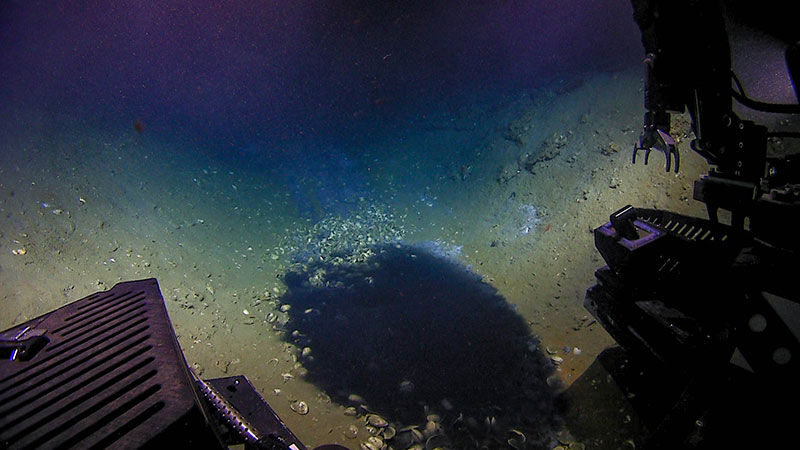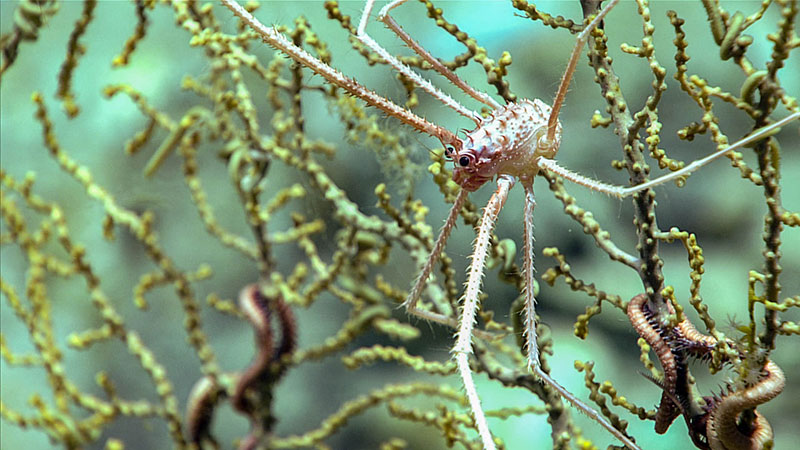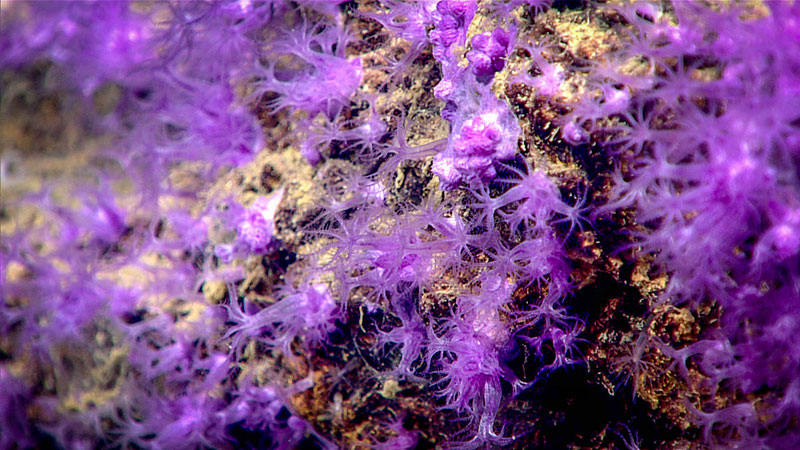Dive 06 explored a mound feature at Hidalgo Basin. Remotely operated vehicle Deep Discoverer (D2) reached the seafloor at a depth of 1,095 meters (~3,592 feet) and immediately came upon chemosynthetic organisms, including bacterial mats and Bathymodiolus mussels. Across the northern portion of the mound, organisms encrusted the occasional carbonate rock outcrops. The bathymetry became more undulated, exhibiting large depressions and pockmarks with bacterial mats, exposed rock, and mussels–both dead and alive. D2 came upon a small brine pool, approximately 1.2 meters in diameter, in the bottom of one of these depressions. Dead mussel shells surrounded the pool and were also observed under the brine. A strip of blue-gray stained sediment led upslope from the pool, which may have once been a path of brine movement to the pool. Just beyond the brine pool, a large continuous bed of dead mussel shells was observed. Moving along the dive track, live mussels gradually became more prevalent, although they generally appeared to be smaller than the dead mussels. A small mound covered in bacteria was observed releasing shimmering subsurface fluids, indicating that the emitted fluids had a different density than seawater. Towards the end of the dive, the bottom transitioned to mud with occasional dead bivalve shells and periodic burrows.
Many bacterial mats and large patches of Bathymodiolus mussels (dead and alive) were observed during this dive. Alvinocaris shrimp were seen association with live mussels. Few individuals of the tubeworm Lamellibranchia were also recorded close to the mussel beds, as was the shrimp Heterocarpus sp., and the golden crab Chaceon fenneri. Away from chemosynthetic communities, the most commonly observed invertebrates were octocorals (Chrysogorgia sp., Acanthogorgia sp., Swiftia sp., and Anthomastus sp.), squat lobsters (Munidopsis sp., Gastroptychus sp., and Uroptychus sp.), golden crab (Chaceon fenneri), long-legged shrimp (Nematocarcinus ensifer), and an unidentified encrusting demosponge. Other invertebrates seen on the dive included stoloniferan octocorals (Clavularia rudis and an unidentified white species), gorgonian octocoral (Paramuricea sp.), black coral (Sibopathes macrospina), a single colony of primnoid coral (Narella pauciflora), various species of sea stars (Brisinga sp., Circeaster americanus, and Myxasteridae), holothurians (Enypniastes eximia and an unidentified species), and jellyfish (Poralia sp.). Fish observed during the dive included rattail (Coryphaenoides spp.), cutthroat eel (Synapobranchus sp.), an unidentified eel, goosefish (Sladenia shafersi), halosaur (Aldrovandia sp.), cusk eels (Monomitopus sp., Gadomus longfilis, Dicrolene sp., and an unidentified Ophidiidae), and an unidentified slickhead (Alepocephalidae).


